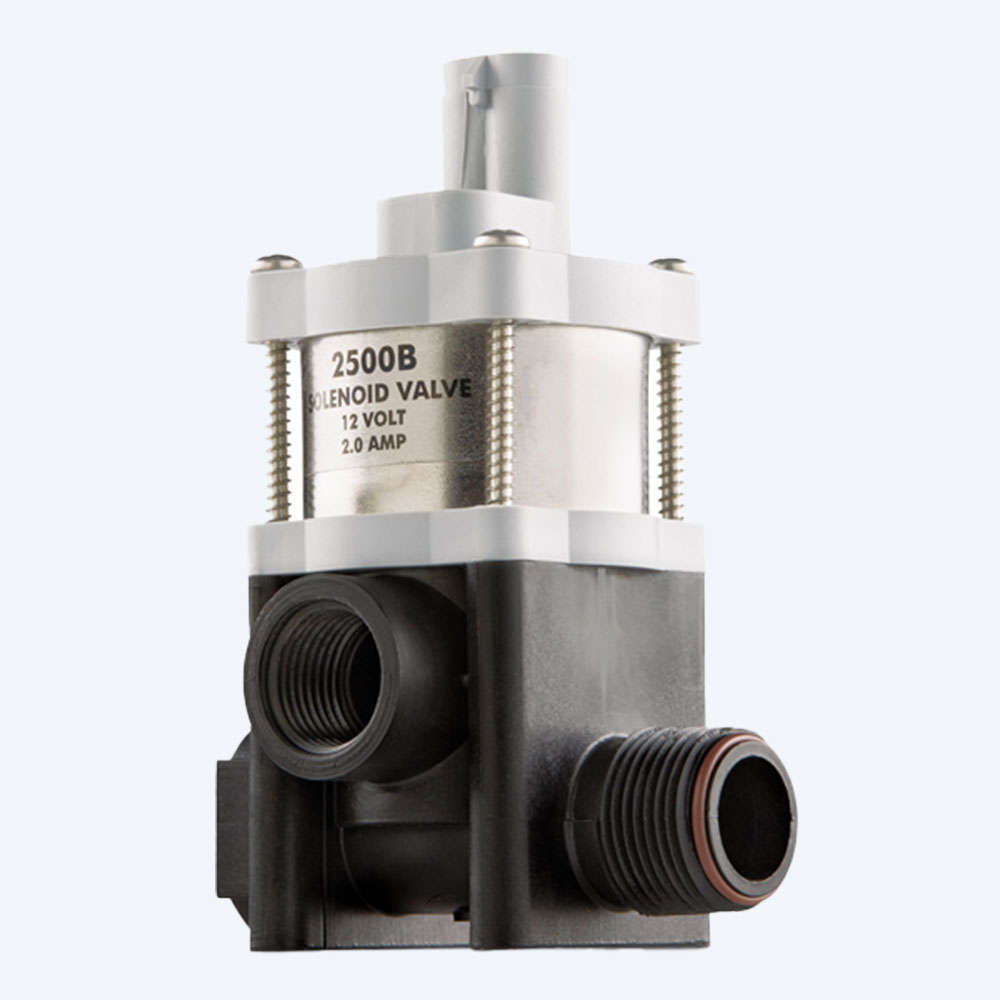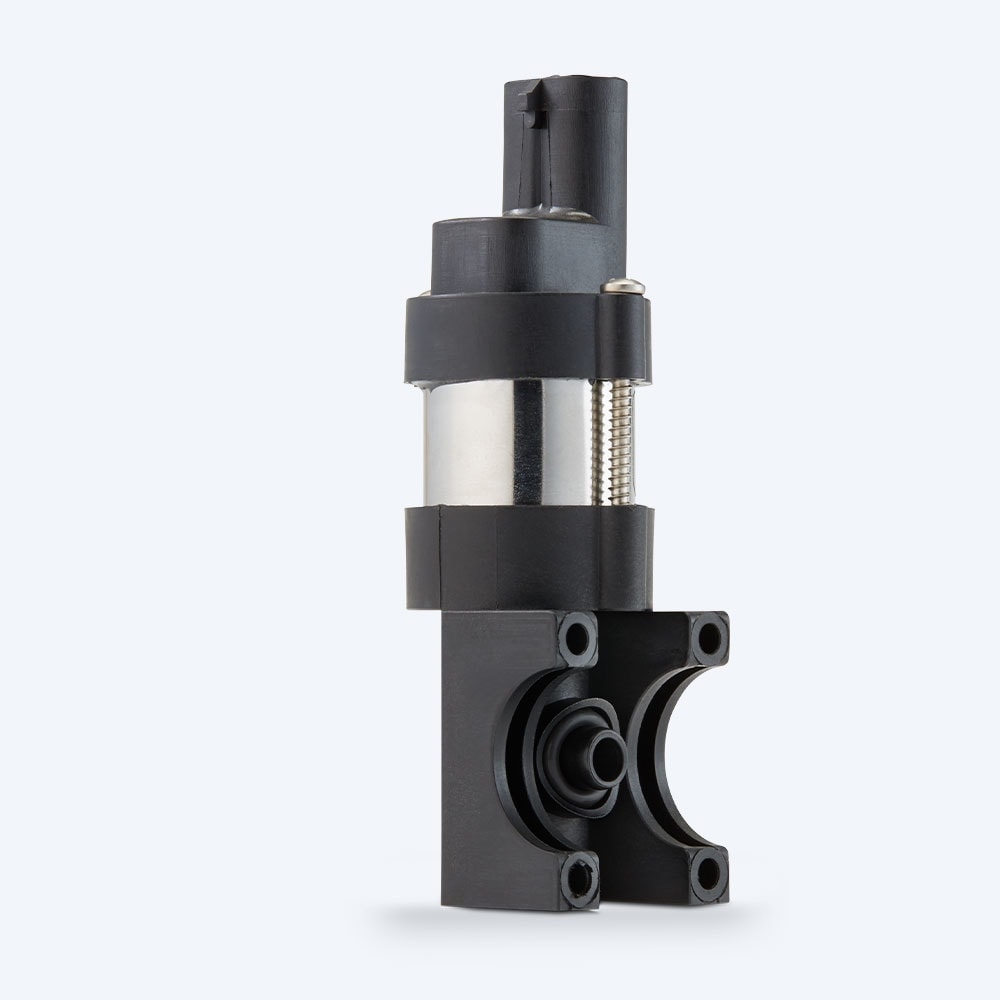Understanding Solenoid Valves
Working Principle of Solenoid Valves
Solenoid valves convert electrical energy to mechanical energy, which causes a magnetic response. When you activate a solenoid valve, an electrical current comes through the wire coil, creating a magnetic field. This magnetic field moves the solenoid, controlling the flow of fluid in hydraulic or pneumatic systems. For farmers looking to improve their crop spraying, understanding the working principle of solenoid valves can help in selecting the right equipment (The Hope Group). You can learn more about what triggers a solenoid valve here.
Types of Solenoid Valves
There are many different types of solenoid valves available, but the two main categories are direct-acting and pilot-operated valves.
Direct-acting Valves
Direct-acting valves open the valve magnetically through direct action. The coil pushes and pulls a shaft, shifting the valve seat. These valves require full power to operate and can be either normally open or normally closed, depending on the application. Direct-acting valves are typically used in systems where quick response times are critical or where the fluid flow needs to be controlled precisely.
| Type | Operation Mechanism | Power Requirement | Common Use Cases |
|---|---|---|---|
| Direct-acting | Coil pushes/pulls a shaft to shift valve | Full power | Quick response systems, precise fluid control |
Learn more about solenoid valves.
Pilot-operated Valves
Pilot-operated valves use the line’s fluid pressure to open the valve. This allows for the use of a smaller coil and reduces costs. However, these valves require available pressure to operate. They are commonly used in larger systems where the fluid flow is substantial, and cost efficiency is a priority.
| Type | Operation Mechanism | Power Requirement | Common Use Cases |
|---|---|---|---|
| Pilot-operated | Fluid pressure opens the valve | Lower power | Larger systems, cost-efficient solutions |
For an in-depth look at solenoid valves, visit our dedicated page.
By understanding the working principles and types of solenoid valves, you can make informed decisions when selecting the right valve for your crop spraying needs. For more information on what triggers a solenoid valve, check here.
Selecting the Right Solenoid Valve
Choosing the appropriate solenoid valve for your crop spraying system is crucial for optimal performance. Several factors come into play, including the valve’s circuit functions and various operational considerations.
Factors to Consider
Selecting the right solenoid valve requires careful attention to several key parameters:
- Kv Value: The Kv value, expressed in cubic meters per hour, determines the flow rate through the valve. This is essential for ensuring the valve can handle the required volume of liquid or gas.
- Pressure Range: The pressure range of the application must be matched with the valve’s capabilities. The lower the valve’s orifice or the stronger the coil, the higher the pressure the valve can shut off (Bürkert).
- Material Compatibility: Ensure the materials used in the valve are compatible with the chemicals and liquids in your crop spraying system to prevent corrosion and extend the valve’s lifespan.
- Environmental Conditions: Consider the environmental conditions under which the valve will operate, including temperature and humidity levels, to ensure reliable performance.
- Response Time: The response time of the valve should be in line with your system’s requirements for accurate and timely control.
| Parameter | Importance |
|---|---|
| Kv Value | Determines flow rate |
| Pressure Range | Matches application pressure |
| Material Compatibility | Prevents corrosion |
| Environmental Conditions | Ensures reliability |
| Response Time | Provides timely control |
For more detailed information on selecting solenoid valves, visit our solenoid valves page.
Circuit Functions of Solenoid Valves
Understanding the circuit functions of solenoid valves is essential for selecting the right one for your needs. The circuit function determines how the valve operates within the system. The most common circuit functions are 2/2-way and 3/2-way valves.
- 2/2-Way Valves: These valves have two ports and two positions. They are typically used to either allow or block the flow of liquid or gas. This makes them suitable for simple on/off control applications.
- 3/2-Way Valves: These valves have three ports and two positions. They can be used to control the direction of flow or to mix and distribute fluids. This makes them versatile for more complex control tasks (Tameson).
| Circuit Function | Ports | Positions | Application |
|---|---|---|---|
| 2/2-Way | 2 | 2 | On/Off control |
| 3/2-Way | 3 | 2 | Directional control, mixing |
Solenoid valves can be configured to perform various functions such as closing, opening, dosing, distributing, or mixing the flow of gas or liquid in a pipe (Tameson). For more information on how these circuit functions can be utilized in your crop spraying system, visit what triggers a solenoid valve?.
By considering these factors and understanding the circuit functions, you can select the most suitable solenoid valve for your crop spraying needs. For additional guidance and product recommendations, explore our comprehensive guide on solenoid valves.
Applications of Solenoid Valves
Solenoid valves play a vital role in various industries, including agriculture, where they are essential for efficient crop spraying. Understanding the different applications of solenoid valves can help you make informed decisions for your farm.
Industrial Implementations
In industrial settings, solenoid valves are used to control machines, dose, mix, or restrict the flow of liquids or gases. For example, in beverage factories, solenoid valves measure the exact amount of drink to be poured into bottles and mix different liquid substances using precise volumes (Starter Solenoid). Their automation feature, compact size, and reliability make them indispensable in various industries.
| Industry | Application | Benefit |
|---|---|---|
| Beverage | Dosing and mixing liquids | Precise volume control |
| Oil and Gas | Regulating flow of oil and gas | Automation and safety |
| Food and Beverages | Controlling ingredient flow | Consistent product quality |
| Utilities | Managing water and wastewater systems | Efficient and reliable operation |
For more on how solenoid valves function in different setups, visit our page on what triggers a solenoid valve?.
Automotive and Utility Sector Uses
In the automotive industry, solenoid valves are commonly used in motor vehicle systems to regulate the flow of automotive fluids such as oil, anti-skid brake fluid, or fuel. They are also used to limit the flow of fuel to the engine to reduce vehicle speed (Starter Solenoid). This ensures optimal performance and safety.
In the utility sector, solenoid valves are used extensively for managing water and wastewater systems, providing reliable operation and automation features (LinkedIn).
| Sector | Application | Benefit |
|---|---|---|
| Automotive | Regulating flow of fluids | Improved vehicle performance and safety |
| Utilities | Water and wastewater management | Efficient system operation |
By incorporating solenoid valves into your crop spraying systems, you can achieve more precise control over the application of fertilizers and pesticides, enhancing your farm’s productivity. For tips on maintaining and caring for your solenoid valves, check out our maintenance section.
For more information on solenoid valves and their applications, explore our detailed guide on solenoid valves.
Maintenance and Care of Solenoid Valves
Proper maintenance and care of solenoid valves are essential for ensuring efficient and reliable operation, especially in crop spraying applications. Regular upkeep can help you avoid unexpected malfunctions and extend the life of your equipment.
Importance of Regular Maintenance
Maintaining your solenoid valves involves replacing any worn-out components and ensuring that the valve parts are clean and free of debris. Regular maintenance ensures predictable valve operation and extends the valve’s life. Frequency of servicing can vary based on the design and application of the valve, typically every 6 to 12 months.
Key maintenance tasks include:
- Cleaning: Remove any debris or build-up that can affect valve performance.
- Inspection: Check for wear and tear, and replace any damaged parts.
- Lubrication: Ensure that moving parts are adequately lubricated to prevent wear.
| Maintenance Task | Frequency |
|---|---|
| Cleaning | Every 6-12 months |
| Inspection | Every 6-12 months |
| Lubrication | As needed based on usage |
Signs Your Solenoid Valve Needs Attention
There are several indicators that your solenoid valve may require maintenance. Recognizing these signs early can prevent more significant issues down the line (Tameson).
- Excessive Noise: Unusual sounds such as buzzing or clicking can indicate internal issues.
- Leakage: Any signs of fluid leakage around the valve require immediate attention.
- Sluggish Operation: If the valve is slow to open or close, it may need cleaning or component replacement.
- Irregular Functioning: Inconsistent performance, such as failing to activate or deactivate, is a red flag.
For additional troubleshooting tips, consult our guide on what triggers a solenoid valve?.
By adhering to these maintenance guidelines, you can ensure that your solenoid valves remain in optimal condition, contributing to the overall efficiency and reliability of your crop spraying system. For more detailed information on solenoid valves, visit our solenoid valves page.



